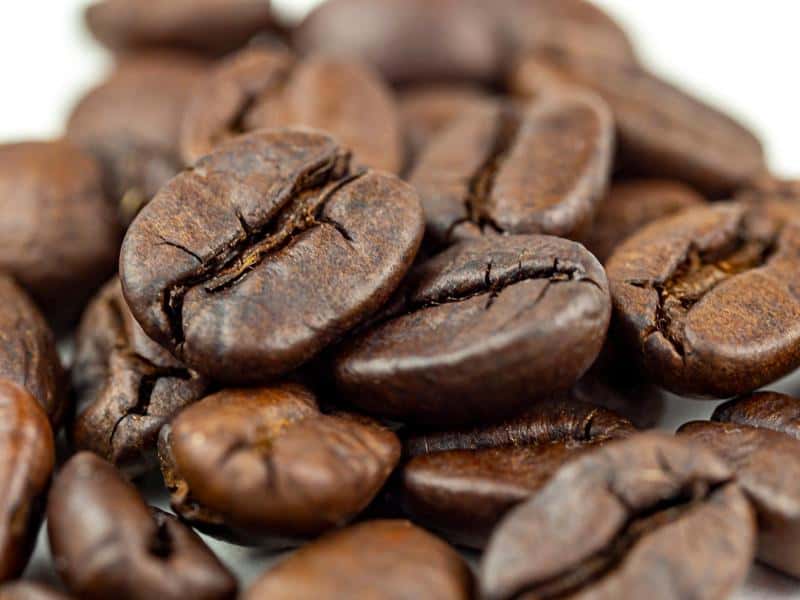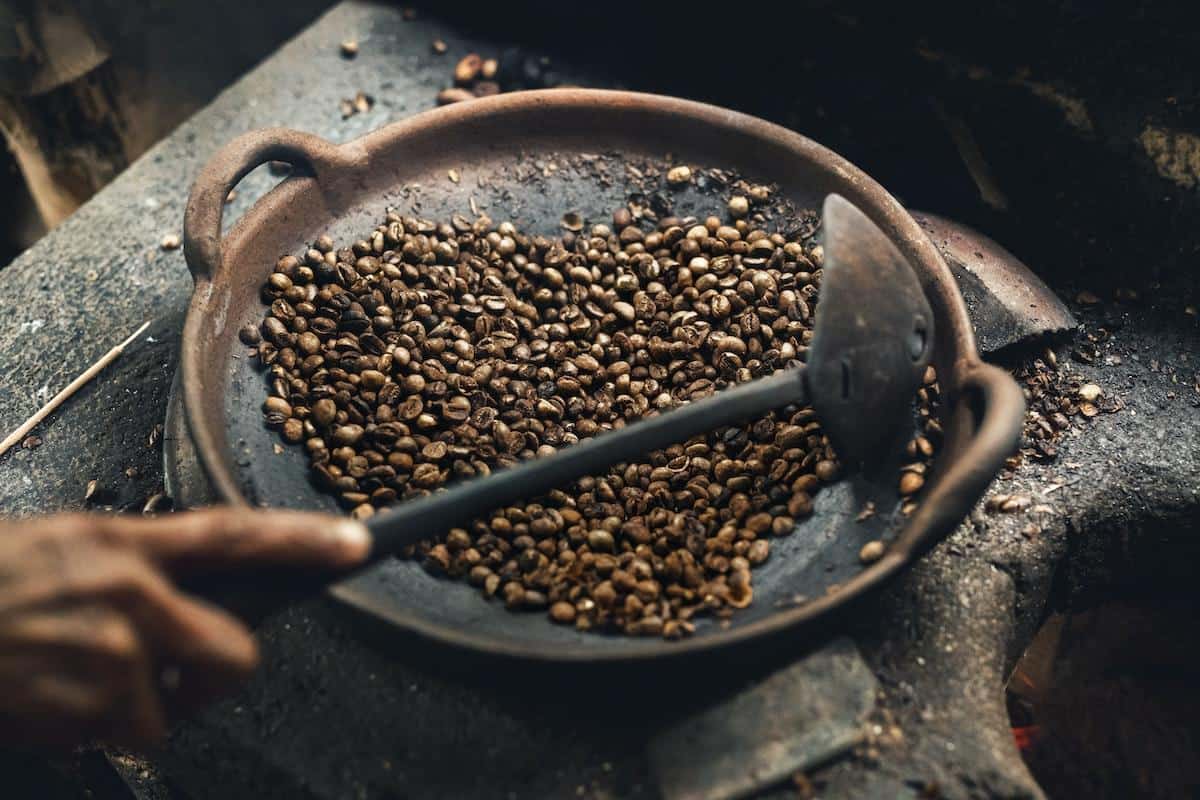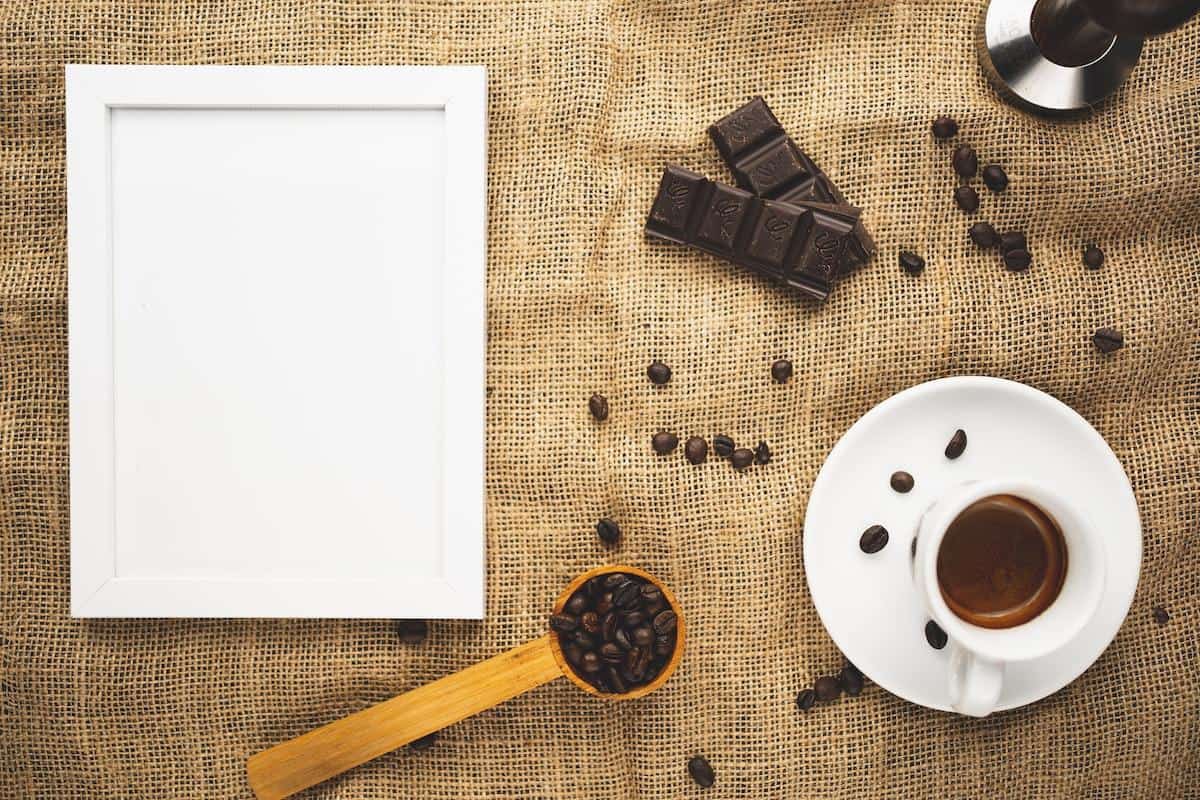Low acidity coffee has become a popular choice among coffee enthusiasts, thanks to its unique taste and health benefits. In this article, we will delve into the concept of acidity in coffee and its impact on taste and digestive health. We will also explore the growing popularity and demand for low acidity coffee, as more people prioritize their well-being while still enjoying a delicious cup of brew.
Acidity plays a crucial role in determining the flavor profile of coffee. It contributes to the brightness, liveliness, and tanginess that many coffee lovers appreciate. However, high levels of acidity can result in an unpleasant sourness or bitterness that may not be suitable for some palates. Furthermore, excessive acidity can cause discomfort for individuals with sensitive stomachs or those prone to heartburn and acid reflux.
This is where low acidity coffee comes in. By choosing beans with naturally lower acidity levels or through specific brewing methods that minimize acidity extraction, you can enjoy all the delightful flavors of coffee without compromising your digestive health. The demand for low acidity coffee has been steadily increasing as more people discover its benefits and seek ways to make their morning routine both enjoyable and gentle on their stomachs.
Understanding the Benefits of Low Acidity Coffee
Low acidity coffee offers more than just a great taste; it also provides numerous benefits for digestion and stomach sensitivity. For individuals who experience digestive issues, such as heartburn or acid reflux, switching to low acidity coffee can make a significant difference in their morning routine.
One of the primary benefits of low acidity coffee is its ability to reduce the risk of heartburn and acid reflux. Traditional high acidity coffees can trigger these uncomfortable symptoms due to the higher levels of acid present in the beverage.
Low acidity coffee, on the other hand, has a pH level closer to neutral, making it much gentler on the stomach. By choosing low acidity options, individuals with sensitive stomachs can indulge in their favorite morning brew without worrying about discomfort or irritation.
In addition to minimizing the risk of heartburn and acid reflux, low acidity coffee is also known to promote better digestion overall. High acidity coffees can cause an imbalance in gut flora and disrupt the natural functioning of the digestive system. Low acidity coffee is easier on the digestive tract and allows for smoother digestion and nutrient absorption. This can lead to improved overall gut health and better digestion throughout the day.
By understanding the benefits that low acidity coffee offers for digestive health, individuals can make informed choices about their morning beverage. Whether it’s those seeking relief from heartburn or individuals looking for a healthier alternative, low acidity coffee provides a solution that allows everyone to enjoy their cup of joe without compromising on taste or well-being.
Exploring Different Brewing Methods for Low Acidity Coffee
When it comes to brewing low acidity coffee, there are various methods that can help extract flavors while reducing the acidity levels. These methods are perfect for those who love the taste of coffee but want to minimize the potential negative effects on their digestive health. By using these brewing techniques, coffee enthusiasts can still enjoy a delicious cup of coffee without worrying about heartburn or acid reflux.
One popular brewing method for low acidity coffee is cold brewing. Cold brewing involves steeping coarsely ground coffee beans in cold water for an extended period, usually overnight. This slow and gentle extraction process produces a smooth, less acidic cup of coffee. Cold brewing is also known for highlighting the natural sweetness and complex flavors of the coffee beans.
Another method that can result in low acidity coffee is using a French press. The French press allows for full immersion of the coffee grounds in hot water, resulting in a bold yet less acidic cup of coffee. The metal mesh filter used in a French press does not let fine particles through, which can further reduce bitterness and acidity.
For those who prefer a pour-over method, there are techniques that can help achieve a low acidity brew. Using a paper filter and pouring hot water over medium-coarse ground coffee in a slow and controlled manner can help minimize bitterness and acidity. Additionally, adjusting the grind size finer or coarser can also impact the acidity levels in the final cup.
Overall, exploring different brewing methods can open up new possibilities for enjoying low acidity coffee that suits individual preferences. Whether it’s cold brewing, using a French press, or opting for a pour-over technique, each method offers its unique advantages in achieving a delicious cup with reduced acidity.
| Brewing Method | Description |
|---|---|
| Cold Brewing | Steeping coarsely ground coffee beans in cold water for an extended period to produce a smooth, less acidic cup of coffee |
| French Press | Full immersion of the coffee grounds in hot water, resulting in a bold yet less acidic cup of coffee |
| Pour-Over Method | Paper filter and controlled pouring of hot water over medium-coarse ground coffee to minimize bitterness and acidity |
The Best Coffee Beans for Low Acidity
Types of Coffee Beans with Low Acidity
When it comes to choosing coffee beans for a low acidity brew, certain types naturally possess lower acidity levels. These beans are often sought after by those who prefer a smoother and less acidic cup of coffee. One such type is the Arabica coffee bean, which is known for its mild and balanced flavor profile. Arabica beans are generally lower in acidity compared to Robusta beans, making them a popular choice for those seeking a low acidity coffee experience.
In addition to Arabica beans, there are specific regions and varieties of coffee that are renowned for their low acidity profiles. For example, Colombian coffee is widely celebrated for its medium body and smooth taste, thanks to its low acidity. The volcanic soils of regions like Costa Rica and Guatemala also produce coffees that tend to have lower acidity levels due to the mineral-rich environment in which they grow.
Roasting Levels and Acidic Content
The roasting process plays a significant role in determining the acidity levels in coffee. As beans are roasted, their chemical composition changes, resulting in altered flavors and acid content. Generally, lighter roasts tend to be more acidic than darker roasts. This is because longer roasting times at higher temperatures reduce the overall acidity of the beans.
If you prefer a low acidity brew, opting for medium or darker roast profiles can be beneficial. Medium roasts strike a balance between preserving flavor complexity while reducing acidity, making them an excellent option for those looking to minimize acid levels without sacrificing taste. Darker roasts, such as French or Italian roast styles, typically have lower acidity levels due to prolonged exposure to heat during the roasting process.
Preferential Selections
To ensure your cup of joe has minimal acidity while maintaining robust flavors, consider selecting coffee beans from regions known for their low-acidity profiles and choosing medium to dark roast levels. Some popular choices include Colombian Arabica beans, Costa Rican coffees, Guatemalan beans, and darker roasts like French or Italian blends. By experimenting with different bean origins and roast levels, you can find your preferred combination for a satisfying low acidity coffee experience.
How Roasting Affects Acidity in Coffee
The Role of Roasting in Determining Acidity Levels
When it comes to understanding the acidity levels in coffee, the roasting process plays a significant role. Roasting not only affects the flavor and aroma of the beans but also determines their acidity. As coffee beans go through the roasting process, certain chemical reactions take place that can either increase or decrease acidity.
During roasting, green coffee beans are exposed to high temperatures, causing them to undergo a complex series of chemical changes. One important component affected by this process is chlorogenic acid, which is responsible for the acidic taste in coffee. The longer and darker the roast, the more chlorogenic acid breaks down, resulting in lower acidity levels.
Different Roast Levels and Their Impact on Acidity
It’s important to note that different roast levels can have varying effects on acidity in coffee. Lighter roasts tend to have higher levels of acidity as they don’t undergo as much breakdown of chlorogenic acid during the roasting process. On the other hand, medium and dark roasts have lower acidity due to more prolonged exposure to heat, which leads to greater degradation of chlorogenic acid.
For those seeking low acidity coffee options, darker roasts are often recommended. These roasts not only offer a bolder and richer flavor profile but also provide a smoother and less acidic drinking experience. Dark-roasted beans often have caramelized sugars that balance out any remaining acidity, resulting in a more pleasant cup of coffee for individuals who are sensitive to high acid content.
Finding Your Perfect Balance: Experimentation with Roast Levels
Finding the perfect balance between flavor preference and desired acidity level is a subjective journey for each individual coffee lover. While darker roast levels generally lead to lower acidity profiles, some people may prefer lighter or medium roasts for their unique flavor characteristics.
It is worth experimenting with different roast levels to discover the optimal balance that suits your taste buds. Local coffee shops and specialty roasters often provide a selection of beans with varying roast profiles, allowing you to compare and contrast different options. By exploring the world of roasted coffee, you can uncover your ideal roast level that delivers both delicious flavor and low acidity to boost your morning routine.
Tips and Tricks for Brewing Low Acidity Coffee at Home
Grind Size
- When brewing low acidity coffee, it’s important to consider the grind size. A finer grind exposes more surface area of the coffee grounds to the water, resulting in a stronger and potentially more acidic brew. To reduce acidity, opt for a coarser grind that allows for a slower extraction process.
- Depending on your preferred brewing method, adjust the grind size accordingly. For example, if using a pour-over method, aim for a medium-coarse grind. This allows the water to flow through the coffee more slowly and extract flavors while minimizing acidity.
Water Temperature
- The water temperature used during brewing also plays a role in acidity levels. Hotter water tends to bring out more acids from the coffee grounds, resulting in a higher acidity cup of joe. Aim for a water temperature between 195°F and 205°F (90°C and 96°C) when brewing low acidity coffee.
- Avoid using boiling water as it can scorch the coffee grounds and increase bitterness and acidity. Use a thermometer or let boiling water sit for a minute or two before pouring it over the coffee to achieve optimal temperature.
Coffee-to-Water Ratio
- Finding the right balance between the amount of coffee grounds and water is essential for brewing low acidity coffee. Adjusting the ratio can help control how much acid is extracted from the beans.
- As a general guideline, use about 1 to 2 tablespoons of coffee grounds per 6 ounces (177 milliliters) of water when brewing low acidity coffee. Experiment with different ratios to find your desired taste preferences while reducing acidity levels.
Brew Time
- The duration of contact between water and coffee grounds can affect both flavor strength and acidity level. Longer brew times tend to extract more acids from the grounds, resulting in a higher acidity brew.
- Depending on your preferred brewing method, adjust the brew time accordingly. For example, if using a French press, aim for a brew time of 4 to 5 minutes. This allows for a balanced extraction and helps minimize acidity.
Filter Type
- The type of filter used during brewing can also impact acidity levels in the final cup of coffee. Paper filters tend to retain more oils and remove some of the naturally occurring acids.
- If aiming for lower acidity, consider using a paper filter or a metal mesh filter designed to reduce acidity in the coffee. These types of filters can help remove a portion of the acids while still allowing flavorful compounds to pass through.
By following these tips and tricks, you can achieve the perfect cup of low acidity coffee at home. Remember that personal preferences may vary, so feel free to experiment with different techniques until you find the ideal balance for your taste buds. Enjoy your morning boost without worrying about acidity-related discomfort.
Enhance Your Low Acidity Coffee Experience
When it comes to enjoying a cup of low acidity coffee, there are various ways to enhance your experience through thoughtful pairings and additions. By exploring the right combinations, you can further bring out the unique flavors of low acidity coffee and create a truly personalized and enjoyable drinking experience.
Complementary Food Pairings
Pairing your low acidity coffee with the right foods can elevate both the beverage and the meal. Some ideal food pairings for low acidity coffee include:
- Pastries and Baked Goods: The balanced flavors of low acidity coffee go well with sweet pastries like croissants, muffins, or cinnamon rolls. The slight acidity in the coffee can cut through the richness of these treats, providing a delightful contrast.
- Fresh Fruits: Opt for fruits that have natural acidity like berries or citrus fruits. The tanginess of these fruits can complement the flavors of low acidity coffee and add a refreshing element to your morning routine.
- Nuts: Whether enjoyed on their own or as part of a trail mix, nuts provide an earthy and textural element that pairs well with low acidity coffee. Almonds, hazelnuts, or pecans are excellent choices to accompany your cup.
Additions for Personalization
While some may prefer their low acidity coffee black to fully appreciate its flavor profile, there are options available to add personalized touches to suit individual tastes. Some popular additions for low acidity coffee include:
- Milk Alternatives: If you enjoy a creamier cup of coffee, consider using milk alternatives like almond milk, oat milk, or coconut milk instead of dairy milk. These plant-based options offer unique flavors that complement the smoothness of low acidity coffee.
- Sweeteners: For those who prefer a touch of sweetness in their drink, natural sweeteners like honey or maple syrup are great options that won’t overpower the delicate flavors of low acidity coffee.
- Spices: Experimenting with spices can add depth and complexity to your low acidity coffee. Try adding a dash of cinnamon, nutmeg, or cardamom for an aromatic twist.
By exploring these complementary food pairings and additions, you can create a customized low acidity coffee experience that suits your taste preferences and enhances the flavors of the brew. Remember to start with small quantities and adjust as necessary to find the perfect balance that brings out the best in your cup of coffee.
Explore Low Acidity Coffee Brands and Products
One of the great things about the growing popularity of low acidity coffee is that there are now many brands and products available to choose from. Whether you prefer ground coffee or whole beans, there are options out there to suit your taste and brewing preferences. In this section, we will introduce and review some commercially available low acidity coffee brands and recommend specific products for you to try.
One popular brand known for its low acidity coffee is Death Wish Coffee. This brand offers a variety of blends that are specifically designed to be less acidic, making them easier on the stomach. Death Wish Coffee uses carefully selected beans and a unique roasting process to achieve their desired flavor profile. They also offer different roast levels, allowing you to find the perfect balance between rich flavors and low acidity.
Another brand worth exploring is Puroast Coffee. Puroast’s mission is to provide coffee lovers with a healthier alternative that doesn’t sacrifice flavor. Their proprietary roasting process reduces acidity by up to 70% compared to traditional coffees while still maintaining a delicious taste. Puroast offers a range of coffee options, including organic and fair trade varieties, ensuring that there is something for everyone.
If you prefer single-origin coffees, consider trying Koa Coffee’s low acidity offerings. Koa Coffee is known for its high-quality beans grown in the famous Kona region of Hawaii. The volcanic soil in this area imparts unique flavors and naturally lower acidity levels in the coffee beans. With options like medium roast or peaberry beans, Koa Coffee allows you to explore different flavor profiles while enjoying the benefits of low acidity.
Conclusion
In conclusion, it is evident that low acidity coffee offers numerous benefits for both taste and digestive health. As discussed throughout this article, the demand for low acidity coffee has been steadily increasing among coffee enthusiasts who prioritize a healthier and more enjoyable morning routine. By understanding the positive effects of low acidity coffee on digestion and stomach sensitivity, individuals can make informed choices to minimize the risk of heartburn and acid reflux.
Furthermore, exploring different brewing methods for low acidity coffee can provide a variety of options to suit individual preferences. Whether it’s cold brewing, using a French press, or opting for a pour-over method, these techniques can help extract flavors while reducing acidity. Additionally, being aware of the best coffee beans for low acidity is crucial in achieving brewing perfection. Certain bean regions and varieties naturally possess low acidity levels and can contribute to a smoother cup of coffee.
Roasting also plays a significant role in determining the acidity levels in coffee. Understanding how different roast levels impact acidity is essential when selecting beans for a low acid brew. Darker roasts tend to have lower acidity compared to lighter roasts. Taking note of these factors and incorporating tips and tricks for brewing perfect low acidity coffee at home can elevate the overall experience.
To enhance the enjoyment of low acidity coffee even further, it is worth exploring food pairings and additions that complement its flavors. Milk alternatives, sweeteners, or spices can be used to personalize the experience according to individual tastes.
In summary, embracing the benefits of low acidity coffee is not only a wise choice for taste but also for digestive well-being. Incorporating this type of coffee into your morning routine can lead to a healthier and more enjoyable start to your day. So why not give it a try? Explore different brands and products available in the market or experiment with brewing techniques at home – you may be surprised by how much difference it makes.
Frequently Asked Questions
Which coffee is least acidic?
The coffee that is generally considered least acidic is cold brew coffee. Cold brew coffee is made by steeping coffee grounds in cold water for an extended period of time, typically 12 to 24 hours.
This slow extraction process results in a coffee that is less acidic compared to traditional hot brewed coffee methods. The lower acidity of cold brew can be attributed to the absence of high heat during extraction, which reduces the release of certain acids that may irritate the stomach.
Which coffee is best for acid reflux?
When it comes to acid reflux, it’s important to choose a coffee with lower acidity to minimize potential discomfort. One option that is often recommended for individuals with acid reflux is low acid coffee. Low acid coffees are specifically processed and formulated to have reduced acidity levels compared to regular coffees.
They are often made by using specific brewing techniques or selecting bean varieties naturally lower in acidity. Brands offering low acid coffees usually provide detailed information about their products’ pH levels and acidity reduction processes.
What coffee is easiest on your stomach?
If you’re looking for a coffee that will be easy on your stomach, opting for a decaffeinated variety may be beneficial. Decaffeinated coffee contains significantly less caffeine than regular coffee, which can help reduce some of the digestive irritation commonly associated with consuming caffeine-rich beverages like coffee.
Additionally, many manufacturers use specific decaffeination processes that aim to preserve flavor while minimizing potential stomach discomfort.
Which coffee causes least acid reflux?
Coffee made from beans grown in regions with lower natural acidity might cause the least amount of acid reflux symptoms for some individuals. These regions include Brazil, Peru, and Sumatra, where the soil and climate conditions tend to produce beans with milder acidity profiles compared to other regions like Ethiopia or Kenya known for more bright and sharp flavors.
Some people also find lighter roasts gentler on the stomach as the longer roasting process can lead to increased acidity.
What kind of coffee is gentle on your stomach?
The kind of coffee often considered gentle on the stomach is usually labeled as stomach-friendly or easy on digestion. These varieties are typically processed to reduce acidity as much as possible. Examples of stomach-friendly coffee include some brands offering low acid blends, which may combine specific bean varieties selected for their naturally lower acidity levels.
Additionally, certain brewing methods like the Swiss Water Process or steam treatment can also contribute to reducing the stomach discomfort associated with coffee consumption by minimizing acid content. It’s worth exploring options specifically marketed as gentle on the stomach and reading reviews from individuals who have found success with these coffees in terms of reduced stomach irritation.








